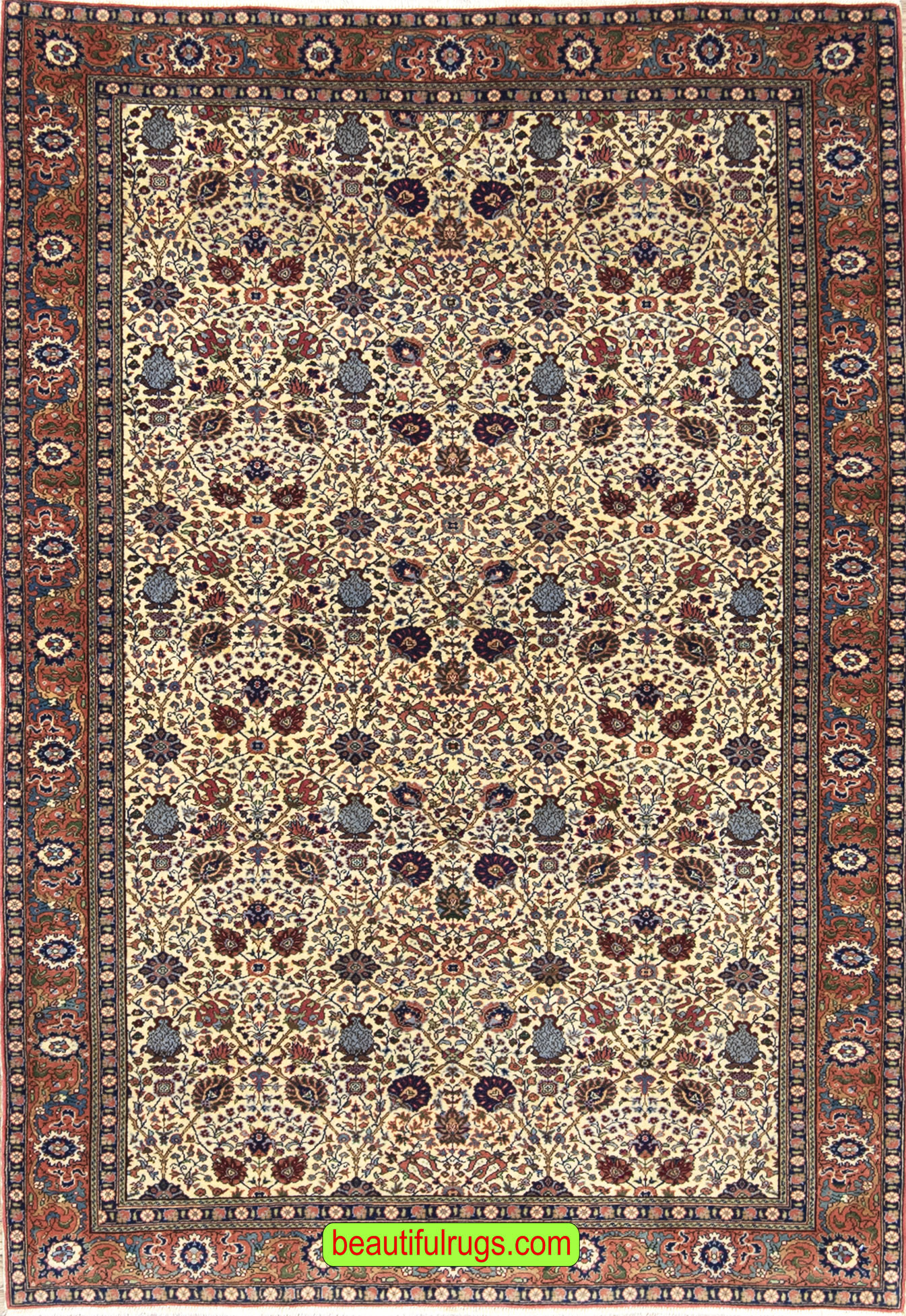Meshkin Rugs and Carpets
History of Persian Meshkin Rugs:
The name Meshkin Rugs is derived from the place Meshkinshahr, a hamlet in northwest Iran on the rugged cliffs of Azerbaijan. Rug weaving is highly valued in this historic region, as in many other areas of Iran.

Almost all the men and women in this isolated and mountainous region possess exceptional talents and the capacity to weave beautiful antique carpets by hand without the use of innovative technology. Their weaving method was somewhat influenced by the Mongols, who came to Iran in the 13th century and settled in the northwest. The formation of the modern carpet business has actually been influenced by this ancient area of Iran as well as some regions of Turkey and Uzbekistan. Some believe that Meshkin rugs witnessed a formal market in the late 19th century when they came in a variety of designs woven by the tribals. These rugs possess beautiful geometric designs and intricate patterns and share similarities with Sarab, a town adjacent to it. Medallions in the shape of diamonds and hexagon forms are commonly found in older works of these beautiful rugs. Medallions inspired by traditional weavings from Asia Minor are sometimes encircled with stylized Hook motifs. The carpets were made with a wool substrate and mostly Caucasian-inspired tribal designs. Meshkin carpets became in high demand, and considerable quantities were frequently requested for export to the West. This increase in carpet weaving became a significant revenue source and significantly aided weaving households. Today it uses the Turkish (symmetrical) knot. The forms range from little bags to enormous room-sized rugs. The local communities have a long-standing tradition of weaving carpets, and they still do it.
What Makes Them Special?
These oriental rugs are made of local sheep’s flawlessly hand-spun, incredibly dense, and glossy wool. Goat hair is also a standard component of traditional oriental rugs. A few locations, like Ardabil, combine silk with the wool pile to produce stunning rugs. Meshkinshahr carpets are exceptionally well-made and fairly long-lasting. The Turkish double knotting technique used by weavers in these places is symmetrical, thick, and tightly packed. Cities like Ardabil are sites where the asymmetrical Persian knot may be seen. The pile on these carpets is made of rich, lustrous wool that is hand-spun from local sheep. In some places, cotton is the primary material of choice since it is incredibly strong. Certain tribal Turkish carpets, on the other hand, include goat hair. Silk is used with wool piles in a few areas, like Ardabil, to make the most magnificent carpets.
How Did Their Demand Increase?
The need for carpets expanded significantly after World War II, and Meshkin weavers changed their methods to produce carpets in various sizes. The rugs were manufactured with a foundation of wool and predominantly Caucasian-inspired tribal patterns. Meshkin carpets were in high demand, and large numbers were ordered for sale to the West.
Persian Meshkin Rugs In Modern Decor:
Meshkin carpets are of good quality and long-lasting. Meshkinshahr is known for producing extraordinarily long runners. The patterns on these rugs are usually geometric, extremely creative, and have beautiful medallions in the middle. On the other hand, the intangible WOW effect these rugs have on your home is impossible to put into words and can only be experienced. Each Meshkin rug is an original, rare piece of tribal artwork. Like other Persian Rugs, these rugs are famous for adding luxury to the home ambiance. You can complement them with any modern interior and make your home look enticing. When it comes to color combinations, these rugs have a vibrant range of options. Warm red, olive, dark navy blue, teal greens, and taupe are some of the beautiful range of colors that are used for making Meshkin rugs. The Charm and magnificence these rugs add to the floor are all because of their rich Middle Eastern legacy and exquisite art that has been preserved for centuries. The majority of the natural dyes used to color rugs are derived from vegetables and roots. These carpets are typically quite durable and well-made, and they continue to utilize the beautiful weaving skills from many years ago.
Beautiful Rugs provides the best traditional oriental rugs made from supreme-quality Persian wool and vegetable dyes. Our antique rugs not only have exquisite floral patterns but are also highly durable. Our traditional carpets have dense, shiny wool flawlessly hand-spun that carries the flawless essence of Persian craftsmanship.
STYLES
Showing all 3 resultsSorted by latest
-
5×7 Rug, Old Persian Meshkin Rug, Colorful Rug
$4,550Original price was: $4,550.$3,412Current price is: $3,412.Add to WishlistAdd to Wishlist -
5×7 Rug, Red Color Geometric Persian Meshkin Rug
$1,750Original price was: $1,750.$1,120Current price is: $1,120.Add to WishlistAdd to Wishlist -
Add to WishlistAdd to Wishlist




